Virtual Reality isn’t yet a mainstream phenomenon. Sure, Samsung has sold ( given away) a lot of Gear VR headsets. The Oculus Rift HTC Vive are building momentum, aystation VR is off to a strong start. It’s all good news for VR fans, but we’re still a long way from hundreds of millions of daily users.
thinks it has a solution: Daydream VR. It’s not a single product, but rather a set of requirements stards. ones that meet the right specs (high-end Gs, accurate speedy sensors) run the right software (Android 7.1 with ’s services) can be labeled “Daydream ready.” Any of these phones can be used in any Daydream VR headset. Over the next few years, the ecosystem could encompass dozens of phone models hundreds of millions of users.
But none of that will happen if ’s vision doesn’t get off to a good start. Fortunately, the first Daydream ready phone we tested (the xel X/a>) is great. Now the first Daydream headset has led. Is Daydream View good enough to kick off an Android VR revolution?
astic is out, fabric is in
A VR headset isn’t worth much if it’s a pain to use, literally figuratively. But Daydream View is one of the most comfortable VR headsets I’ve used, thanks in part to its fabric enclosure. It’s soft pliable, incredibly lightweight. The face mask is comfortable, easily removed to wash.
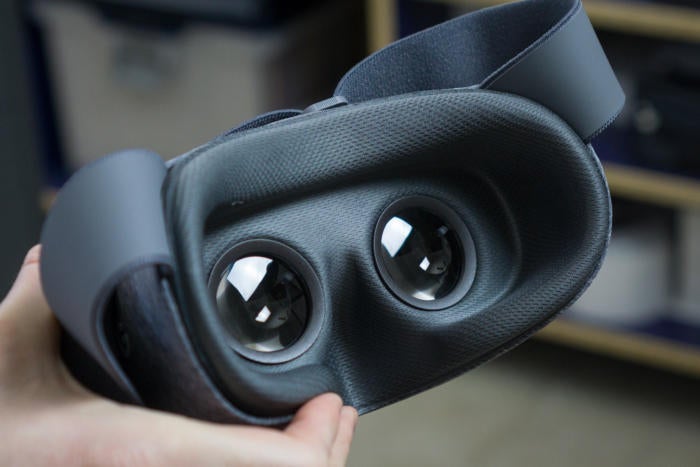

Daydream View’s soft, pliable build is extremely light comfortable, but a bit of light leaks in.
Sure, it’s not exactly fashion-forward. I mean, if you’re strapping a phone to your face, you’re going to look kind of goofy. Still, it’s less embarrassing than the Gear VR’s big plastic chunk, or even the sleek deliberate Oculus Rift.
The xel Xis a fairly large heavy phone, weighs down the front of the headset. I often found myself adjusting the headset’s position on my face, trying to find the perfect focus. Some of this is due to the fact that, like Gear VR, there’s no way to adjust the interpupillary distance, or I. This terms refers to how far apart the lenses are from each other, adjustment helps the lenses conform to those with wider or narrower set eyes.
I have a small narrow head with a small I, find that most VR headsets are a bit of a struggle to adjust. I can get Daydream View to fit right look clear, but just like with Gear VR, I have to fiddle with it a bit. Once it’s in place, though, Daydream View is the most comfortable phone-based VR headset I’ve used.


’s VR headset looks quite small next to a Gear VR.
There’s a bit of a gap along the sides, at least on my narrow head, which is good news for those that wear glasses but bad news for everyone else. As light leaks in through the gap, it creates noticeable reflections on the lenses. If you’ve got a bright lamp or window in the room, you’ll notice it as you turn your head around. It may be less of a problem for those with larger or wider heads, but I found myself looking for a darker environment to really immerse myself.
Incredibly easy to use
If is going to get hundreds of millions of phone users to become VR fans, it needs to make everything easy as possible. In this regard, Daydream View is leaps bounds over Gear VR other VR headsets.
This is how you use it: You put your phone the face flap, then you close it with the little elastic loop latch. That’s it. You’re done. No plugging anything in. No making sure you have the version of the headset with the right B connector. No plastic spring-loaded latches. st lay it on the flap, close the flap, stick it on your face.


y your phone on the door, close it, go. No plugs, ports, springs, or latches.
Even the head b is easy to adjust when you’re all strapped in. The Daydream system software takes care of everything, including rendering the VR display on your phone at just the right spot, adjusting for different phone sizes.
A simple intro tutorial steps you through the basics of operation—adjusting the fit to get a clear view, using the controller, re-centering your view. Then you find yourself in a stylized cartoon forest, staring at the VR menu.
The magic w
If there’s a problem with phone-based VR solutions, it’s the limited way in which you interact with the environment. Cardboard has essentially one button, all interaction dems you press it while you look at something. Gear VR has a touch-sensitive pad a back button, but you have to hold your h up to the side of the headset to use it. Some Gear VR apps support gamepads, but now you’re talking about a separate purchase, Bluetooth pairing, hit-or-miss app support.
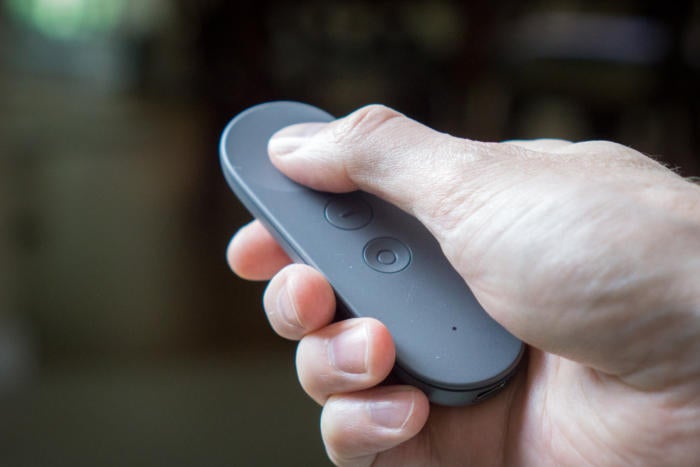

The controller has nothing on Oculus Touch or Vive, but it’s light years ahead of other mobile-based VR.
The Daydream approach is a big step up. You hold a small remote with a concave circular click-pad at the top, a single button beneath that (usually used to get to an app’s menu), a system menu button down a little further (press to return to Daydream menu, or hold to re-center view). Volume buttons sit along the right edge.
The controller isn’t precisely tracked in 3D space the way HTC Vive’s controllers or Oculus Touch are. Rather, it relies on motion sensing, sort of like a i controller. As a result, it’s accurate enough to point at select items, swing around like a sword or magic w, or tip tilt. It’s a great inexpensive way to interact with VR apps games—highly intuitive, small, simple, light.
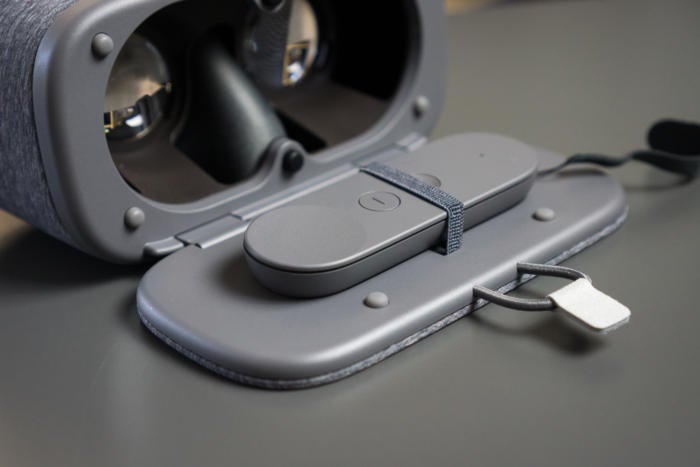

There’s even a little divot b to store the controller inside the headset.
I found it to be just a little laggy, though. The movement of the controller in my VR view was just a split-second behind my movement in the real world. This, along with the fact that it’s precise position isn’t tracked, is enough to break the immersive feeling of directly manipulating the virtual world. It also has a tendency to drift a bit, slowly going off-center as you use the system. Re-centering is trivial (just hold the home button), but it’s a problem I’d rather not deal with.
I’d love a highly accurate, latency-free, position-tracked motion control solution, but that’s just not possible with today’s phone-based VR technology. ile ’s solution has its drawbacks, it’s leaps bounds ahead of the interaction model for Gear VR similar headsets.
VR quality on par with Gear VR
Getting into VR with the Daydream View is easy, the headset is comfortable, the motion-sensitive remote is the best phone-based control method yet. None of that matters if the VR experience itself is sup-par. Fortunately, absolutely nailed this crucial criterion.
In order for VR to make you feel like you really are in a virtual place, it needs to meet certain minimum performance stards. among these is motion-to-photon latency—the time it takes to go from moving your head to showing your eyes a new view of the world. This needs to be combined with a very high, very stable frame rate, a low-persistence display that won’t blur or smear your view. Fail at any of this, you’ll be pulled out of the VR experience, or worse, get sick.
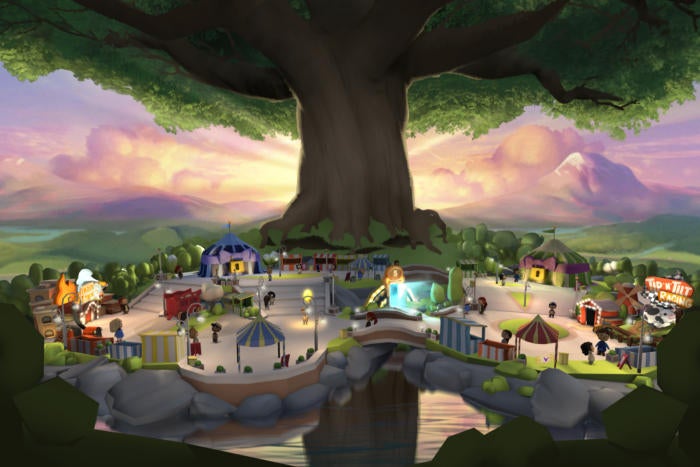

VR performance visual quality is as good as any I’ve seen from a mobile VR solution. Right up there with Gear VR.
This is one reason why I maintain that Cardboard—while interesting, cheap, fun—isn’t real VR. It doesn’t achieve that sense of “presence” that really makes you feel like you’re in another place. I’ve often had to explain that Gear VR isn’t just a fancy Cardboard, but instead meets minimum “real VR” stards. th Daydream, has achieved a similar level of performance. The graphics rendering is just as immediate responsive to your head movements, the visual quality field of view is quite similar.
l phone-based solutions are currently a big step behind the Rift, Vive, aystation VR. The inability to track head controller position, rather than just movement, is a big issue. This won’t be solved until someone figures out how to reliably do “inside out” position tracking on phone hardware. Daydream VR is still real VR, though, can provide great experiences. It’s just necessarily more limited than the “full” VR experiences of the more expensive, high-end setups.


The app selection at launch is pretty thin. Half of what you see here is not yet available.
If there’s a real problem with Daydream VR, it’s the lack of content. The launch selection is extremely limited, with half of the Day One apps coming from itself. Yes, photos, YouTube, Street View are really slick in VR, but there are only about five non- apps games ready at launch.
ckily, there’s plenty more on the way. Must-have video services like Netflix, HBO Go, Hulu should l in the next few weeks. Big-br apps like GO are mixed in with nearly 20 other less-well-known titles, all promised by the end of the year. The launch software is slim pickings, but early adopters shouldn’t have to wait too long for a more robust selection. The offerings on tap for Gear VR are certainly more extensive, if not higher quality.
At this price, it’s a no-brainer
Daydream View is $79. That undercuts the price of Gear VR ($99), while offering generally superior quality ease-of-use, though with a much smaller content library. Given that the only phones to currently support Daydream are the xel xel X which cost $650 or more, you’d be crazy not to drop another $80 on such a fun accessory.
In time, there should be more Daydream-compatible gear: more headsets to choose from, more Daydream-ready phones at a range of prices. For now, it’s hard to view Daydream View as anything other than a great accessory for the xel phones. In that capacity, the headset is is quite good, with the potential for greatness if the apps really start flowing.
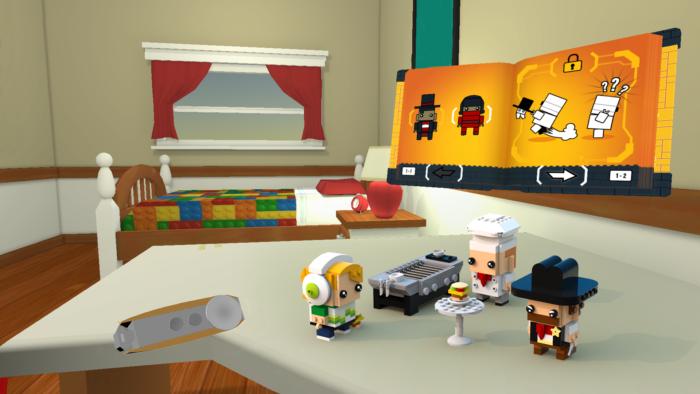

Do I want to play with GO in VR? You bet I do! It’s a shame it’s not yet available.
The long-term prospects of the Daydream VR platform, however, are hard to predict. There are lots of variables: How many xel phones will sell? How quickly will other Daydream-ready phones hit the market? at about other compatible viewers? Can developers expect to ever make money on this stuff, or will this particular VR platform fizzle before it has a chance to exp? is going to have to stick with it for some time, investing in content while continually making hardware software improvements. If they do, it has the potential to be a great smartphone-based VR platform. l the pieces are there.














